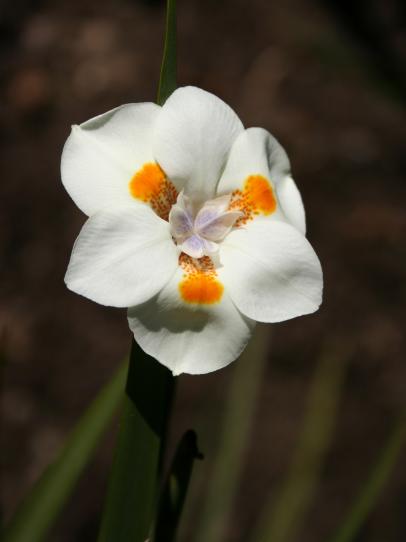African Irises
Learn about this low-maintenance, drought-tolerant perennial.

Image courtesy of Monrovia.
African iris is a true beauty but one that gives gardeners fits because it tends to succumb to crown rot in areas with high humidity and heavy soils. Hardy in Zones 8-11.
Tap into the beauty of drought-tolerant African iris. A cousin to bearded iris, Siberian iris and the rest of the iris flower clan, African iris is a native of South Africa. Botanically it’s known as Dietes bicolor. In common parlance, African iris is also called fortnight lily, yellow fortnight lily and butterfly flag.
The common names of African iris reveal much about its nature. The name African iris uncovers its native habitat, which is in the Bathurst region of the Eastern Cape in South Africa. This beauty occurs naturally in marshy places, but it also thrives where soil tends toward the dry side. African iris is also frost tolerant. It’s hardy in Zones 8 to 11, although cold winters in Zone 8 can kill plants to the ground.
The name fortnight lily refers to the plant’s habit of flowering from spring through fall. African iris produces a smattering of blooms in each clump of leaves roughly every two weeks. Each blossom lasts only one day, but because stems appear about every 14 days, the flower show is strong and steady.
Butterfly flag is another name of African iris, which refers to the plant’s lovely blooms that float and hover above the leafy clumps like butterflies. The petals on African iris flowers are pale yellow with purple markings. Blooms are fragile and appear almost like a flattened iris blossom. Snip flower stems after blooms fade to prevent self-sowing.
You’ll see the strongest flower show on plants tucked into full sun, although plants do appreciate light afternoon shade in hottest regions. African iris is drought tolerant once established, but plants thrive and flower best when they receive regular water. Fertilize plants in spring as new growth starts to appear and again in midsummer. Reduce both water and fertilizer as flowering slows down.
African iris grows 18 to 24 inches tall and 9 to 12 inches wide. It forms dense clumps that can become so crowded they’ll shove rhizomes out of the ground in the center of the clump. Flower stems and leaves tend to be thick and even woody. They can be difficult to cut, but figure out what tool works for you, because plants look best when dead leaves and spent flower stems are removed. Some gardeners use sharp pruners; others grab a pruning saw or hedge shears.
In colder zones, grow African iris as an annual in containers. Overwinter containers indoors in a bright window, barely watering plants through winter. Alternately, place African iris in pots in a protected, cool and dark location, like a basement, and let plants go dormant in winter. Cut off old leaves in spring (or fall), fertilize, water and wait for new growth to appear.


No comments:
Post a Comment
Note: Only a member of this blog may post a comment.